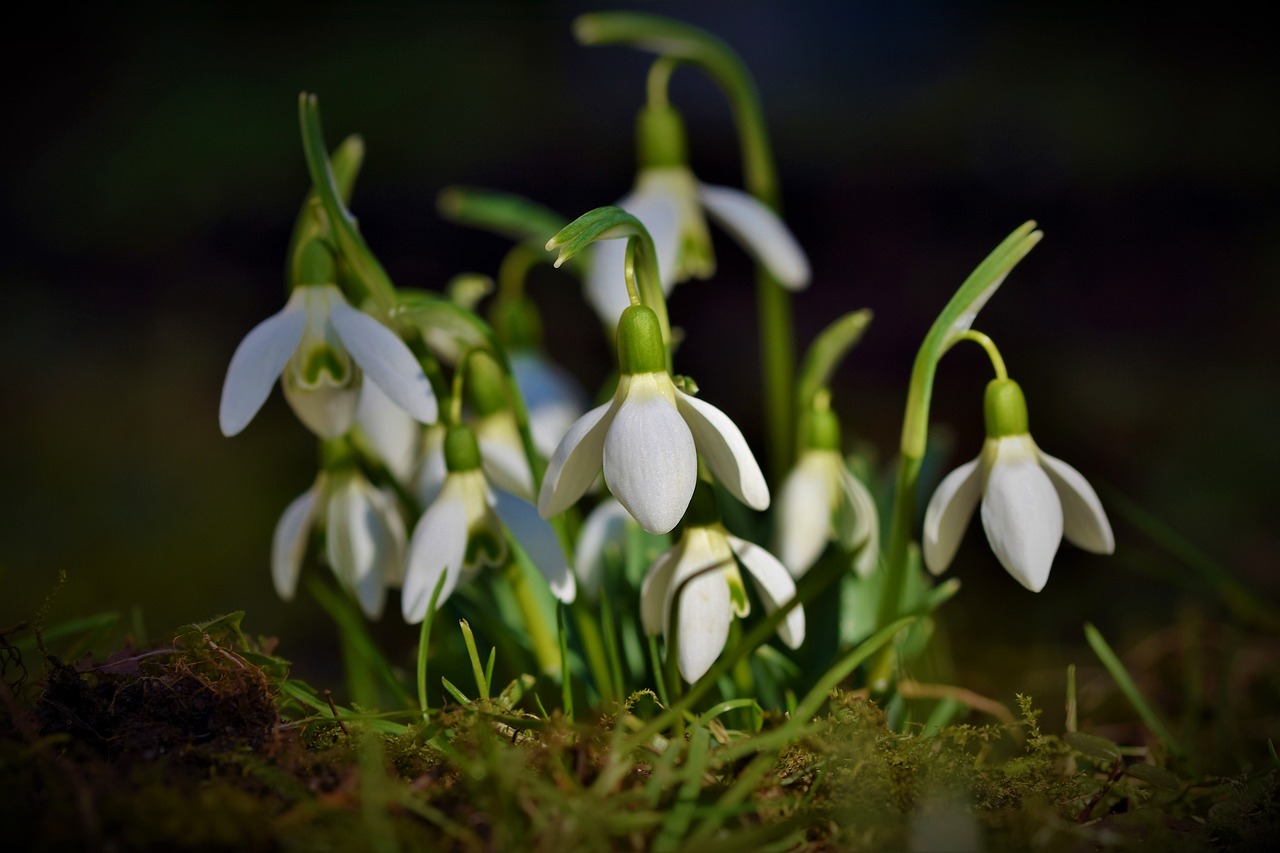The Japanese Snowbell tree, known scientifically as Styrax japonicus, has a moderate growth rate. Under optimal conditions, it typically grows about 12 to 24 inches per year, making it suitable for ornamental planting in gardens and landscapes.
Understanding the Japanese Snowbell Tree
The Japanese Snowbell tree is a beautiful deciduous tree native to Japan, Korea, and China. It is highly valued for its striking appearance and delicate flowers. The tree features a rounded crown, glossy green leaves, and produces white, bell-shaped flowers that dangle gracefully from its branches in late spring to early summer. This stunning display makes it a popular choice for ornamental planting in residential and commercial landscapes.

One of the key factors to consider when planting the Japanese Snowbell tree is its growth rate. Understanding this aspect is crucial for gardeners and landscapers aiming to create a harmonious landscape design. The growth rate can significantly impact how quickly the tree will provide shade and visual interest in a garden setting.
Growth Rate Overview
The growth rate of the Japanese Snowbell tree can vary based on several factors, including soil quality, sunlight exposure, and water availability. Generally, this tree is classified as having a moderate growth rate compared to other ornamental trees. Below are some important points regarding its growth:
- Average Height: When fully mature, the Japanese Snowbell tree typically reaches heights of 20 to 30 feet.
- Width: The spread can range from 15 to 25 feet, creating a lovely canopy.
- Annual Growth: On average, expect an increase of 1 to 2 feet in height each year.
- Lifespan: This tree can live for several decades, making it a lasting addition to any landscape.
Optimal Growing Conditions
To achieve a healthy growth rate, the Japanese Snowbell tree thrives in specific conditions. Here are some optimal growing conditions:

- Soil Type: Well-drained, loamy soil is ideal. The tree prefers slightly acidic to neutral pH levels.
- Sunlight: Full sun to partial shade is best for optimal flowering and growth.
- Watering: Regular watering is crucial, especially during dry spells. However, avoid overwatering as it can lead to root rot.
- Fertilization: Applying a balanced fertilizer in early spring can promote healthy growth.
Pest and Disease Resistance
The Japanese Snowbell tree is generally resistant to many common pests and diseases. However, it can still be susceptible to certain issues, which can affect its growth rate. Here are some potential concerns:
- Leaf Spot: This fungal disease can cause unsightly spots on leaves but rarely affects overall health.
- Aphids: These small insects may infest the tree, but they can often be controlled with insecticidal soap.
- Scale Insects: These pests can weaken the tree if not managed promptly.
Growth Rate Variations
The growth rate of the Japanese Snowbell can also differ based on geographic location. Trees planted in warmer climates may experience faster growth due to longer growing seasons. Conversely, those in cooler areas may grow more slowly. Understanding these variations can help gardeners plan accordingly when selecting locations for planting.
In summary, the Japanese Snowbell tree boasts a moderate growth rate that allows it to flourish in various landscapes. With proper care and attention to its growing conditions, this tree can become a stunning focal point in any ornamental garden.

Planting and Caring for the Japanese Snowbell Tree
Successfully growing the Japanese Snowbell tree involves more than just understanding its growth rate. Proper planting and care techniques are essential to ensure the tree thrives and reaches its full potential. This section explores effective methods for planting, watering, pruning, and protecting the tree from adverse conditions.
Best Practices for Planting
When planting a Japanese Snowbell tree, timing and technique play crucial roles. Here are some best practices to follow:
- Timing: The ideal time to plant is in early spring or fall when the weather is mild. This allows the tree to establish roots before extreme temperatures.
- Location: Choose a location that receives full sun to partial shade. Ensure the area has good drainage to prevent waterlogging.
- Soil Preparation: Amend the soil with organic matter, such as compost, to improve fertility and drainage. Aim for a soil pH between 6.0 and 7.0.
- Planting Depth: Dig a hole that is twice as wide as the root ball but no deeper than the root ball itself. Planting too deep can suffocate the roots.
Watering and Irrigation
Proper watering is critical during the establishment phase of the Japanese Snowbell tree. Here are some guidelines:
- Initial Watering: After planting, water the tree thoroughly to settle the soil around the roots.
- Frequency: Water regularly, especially during dry spells. Young trees require more frequent watering than established ones.
- Signs of Underwatering: Yellowing leaves and wilting can indicate that the tree needs more water.
- Signs of Overwatering: Root rot can occur from excessive moisture, so ensure that the soil drains well.
Pruning Techniques
Pruning is essential for maintaining the shape and health of the Japanese Snowbell tree. Here are some key points to consider:

- Timing: The best time to prune is in late winter or early spring before new growth begins.
- Removal of Deadwood: Regularly check for and remove any dead or diseased branches to promote healthy growth.
- Shaping: Lightly shape the tree to maintain its natural form while avoiding excessive cutting.
- Avoid Heavy Pruning: This tree does not respond well to heavy pruning, as it may affect flowering.
Pest Management Strategies
While the Japanese Snowbell tree is generally resilient, some pests can pose challenges. Implementing effective pest management strategies is crucial for maintaining health.
- Regular Inspections: Routinely check for signs of pests or diseases, especially during growing seasons.
- Natural Predators: Encourage beneficial insects like ladybugs that prey on aphids and other pests.
- Pesticide Use: If infestations occur, use insecticidal soap or neem oil as organic options to minimize harm to beneficial insects.
Disease Prevention Techniques
Preventing diseases is vital for ensuring the longevity of your Japanese Snowbell tree. Consider these techniques:
- Avoid Overcrowding: Ensure adequate spacing between plants to enhance air circulation and reduce humidity.
- Irrigation Practices: Water at the base of the tree rather than overhead to keep foliage dry and reduce fungal diseases.
- Soil Health: Maintain healthy soil through regular amendments with organic material, promoting beneficial microbial activity.
The Aesthetic Appeal of Japanese Snowbell Trees
The aesthetic qualities of the Japanese Snowbell tree make it an excellent choice for ornamental planting. The following features enhance its appeal in garden designs:
- Blooming Season: The white, bell-shaped flowers bloom in late spring, creating a stunning visual display that attracts pollinators.
- Fall Foliage: In autumn, the leaves turn yellow to golden hues, adding seasonal interest to landscapes.
- Architectural Form: The tree’s graceful shape adds elegance to any garden design, making it suitable for various settings.
The Japanese Snowbell tree not only contributes beauty but also provides ecological benefits by supporting local wildlife. Its flowers attract bees, butterflies, and other pollinators, making it a valuable addition to any garden ecosystem.
Cultivating this tree with proper care ensures it thrives and enhances your landscape for years to come.
Environmental Considerations for Growing Japanese Snowbell Trees
When considering the cultivation of Japanese Snowbell trees, understanding environmental factors is essential. These trees thrive best in specific conditions that align with their natural habitat. This section will explore the ideal climate, soil conditions, and other environmental aspects that contribute to the successful growth of the Japanese Snowbell.
Climate Requirements
The Japanese Snowbell tree is well-suited for temperate climates. Here are some key climate requirements:
- Temperature Range: This tree prefers moderate temperatures, thriving in USDA hardiness zones 5 to 8. It can tolerate winter temperatures as low as -20°F (-29°C).
- Humidity: Moderate humidity levels are beneficial for growth. Too much dryness can stress the tree, while excessive moisture may lead to disease.
- Sunlight: While it can tolerate partial shade, full sun promotes optimal growth and blooming. Aim for at least six hours of direct sunlight daily.
Soil Conditions
The quality of soil plays a crucial role in the health and growth rate of the Japanese Snowbell tree. Consider the following soil conditions:
- Drainage: The tree requires well-drained soil to prevent waterlogging. Sandy or loamy soils are ideal.
- Soil pH: A slightly acidic to neutral pH (between 6.0 and 7.0) is preferred for optimal nutrient uptake.
- Nutrient Content: Enriching the soil with organic matter can enhance fertility and support healthy growth. Compost or well-rotted manure works well.
Watering Practices
Proper watering is vital for establishing the Japanese Snowbell tree, especially during its initial growth phase. Here are some effective practices:
- Deep Watering: Water deeply but infrequently to encourage deep root growth. This helps the tree become more drought-resistant as it matures.
- Mulching: Applying a layer of organic mulch around the base helps retain soil moisture and regulate temperature.
- Irrigation Systems: Drip irrigation systems can be effective in providing consistent moisture without oversaturating the soil.
Companion Planting with Japanese Snowbell Trees
Integrating Japanese Snowbell trees into a larger garden design can enhance both aesthetics and biodiversity. Companion planting involves selecting plants that complement each other, benefiting overall garden health. Here are some excellent companion plants:
- Azaleas and Rhododendrons: These flowering shrubs thrive in similar soil and light conditions, creating a vibrant spring display when planted together.
- Hostas: The lush foliage of hostas provides a beautiful contrast to the delicate flowers of the Snowbell tree while thriving in partial shade.
- Ferns: Various fern species can thrive under the canopy of a mature Snowbell tree, adding texture and greenery to the landscape.
The Benefits of Companion Planting
Companion planting offers several benefits, including:
- Pest Control: Some plants can deter pests that may harm the Snowbell tree, reducing the need for chemical interventions.
- Biodiversity:**: A diverse planting scheme encourages beneficial insects and pollinators, promoting a healthier ecosystem.
- Aesthetic Appeal: Combining different plants creates a visually appealing garden design that changes with the seasons.
Cultural Significance of Japanese Snowbell Trees
The Japanese Snowbell tree holds cultural significance in its native regions. Understanding this aspect can deepen appreciation for the tree beyond its ornamental value. Here are some cultural insights:
- Symbolism: In Japan, the Snowbell tree symbolizes purity and beauty, often associated with traditional gardens.
- Cultural Festivals: The blooming season coincides with various cultural festivals celebrating nature’s beauty, where families gather to appreciate floral displays.
- Artistic Representations: The elegant form and delicate flowers of the Snowbell tree have inspired artists and poets throughout history, often featured in paintings and literature.
The Japanese Snowbell tree not only enriches landscapes but also connects people with nature through its beauty and cultural heritage.
Maintenance and Long-Term Care for Japanese Snowbell Trees
Caring for a Japanese Snowbell tree goes beyond initial planting and watering. Long-term maintenance is crucial for ensuring the tree remains healthy and visually appealing throughout its life. Here are some essential maintenance tips to consider:
Seasonal Care
Providing seasonal care can help the Japanese Snowbell tree thrive through varying weather conditions. Here are suggestions for each season:
- Spring: As new growth begins, inspect the tree for any signs of pests or diseases. Fertilize with a balanced, slow-release fertilizer to encourage healthy growth.
- Summer: Monitor moisture levels, especially during dry spells. Regular watering is vital during the hotter months. Ensure that the soil remains adequately moist but not soggy.
- Fall: Rake fallen leaves to prevent fungal diseases. This is also a good time to apply mulch to retain soil moisture and protect roots during the winter.
- Winter: In colder climates, consider wrapping the trunk with protective materials to guard against frost damage. Keep an eye on heavy snow accumulation on branches.
Potential Challenges
Like all plants, the Japanese Snowbell tree may face several challenges during its growth cycle. Awareness of these potential issues can help in timely intervention:
- Drought Stress: If not watered adequately, the tree may show signs of stress, such as wilting leaves. Implement a watering schedule during dry periods.
- Leaf Drop: Some leaf drop may occur in late summer or fall; however, excessive leaf drop can indicate underlying issues such as disease or pest infestations.
- Fungal Diseases: Fungal infections can occur if humidity is high. Regular pruning and proper care can mitigate these risks.
Japanese Snowbell Trees in Landscape Design
The Japanese Snowbell tree’s elegant form and seasonal beauty make it an excellent choice for various landscape designs. Here are some ways to incorporate this stunning tree into your garden:
- Focal Points: Plant a Japanese Snowbell tree as a standalone specimen to create a stunning focal point in your yard or garden.
- Garden Borders: Use multiple trees to create a natural border or screen, providing privacy while adding beauty to your landscape.
- Mixed Plantings: Combine with other flowering shrubs and perennial plants to create a vibrant garden display throughout the seasons.
Final Thoughts
The Japanese Snowbell tree offers an array of benefits, from its moderate growth rate and stunning seasonal flowers to its cultural significance and environmental contributions. By understanding its care requirements and environmental preferences, gardeners can successfully cultivate this beautiful tree in their landscapes.
With its graceful appearance and ability to attract pollinators, the Japanese Snowbell tree serves as an essential element in promoting biodiversity within gardens. Its historical and cultural context enriches the gardening experience, connecting individuals to nature and tradition.
In conclusion, whether you are a seasoned gardener or a novice looking to enhance your landscape, the Japanese Snowbell tree is a worthy addition. With proper care and attention, it promises to be a beautiful and enduring feature in any ornamental garden, providing enjoyment for years to come.
